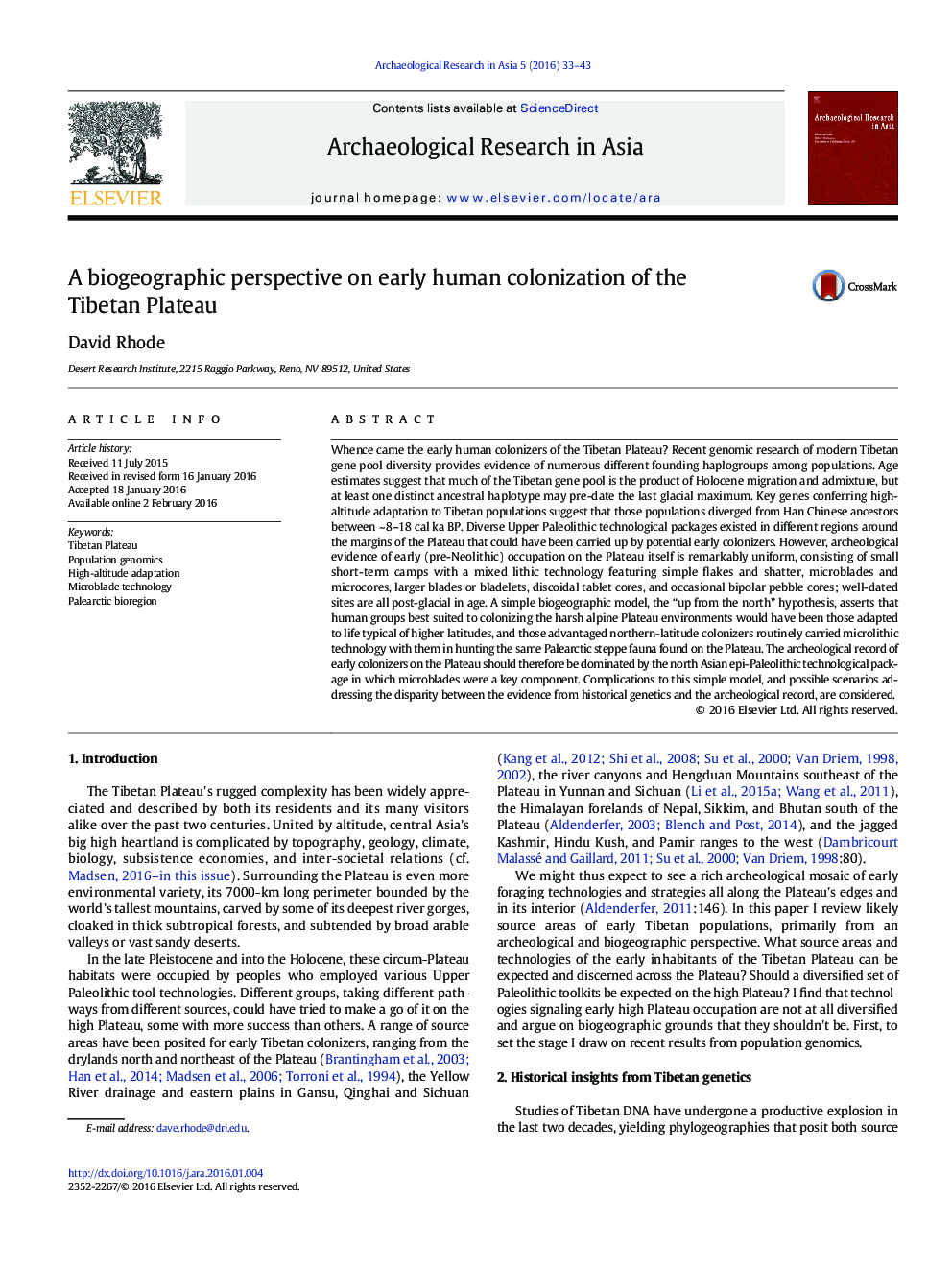| کد مقاله | کد نشریه | سال انتشار | مقاله انگلیسی | نسخه تمام متن |
|---|---|---|---|---|
| 1034155 | 1483767 | 2016 | 11 صفحه PDF | دانلود رایگان |
Whence came the early human colonizers of the Tibetan Plateau? Recent genomic research of modern Tibetan gene pool diversity provides evidence of numerous different founding haplogroups among populations. Age estimates suggest that much of the Tibetan gene pool is the product of Holocene migration and admixture, but at least one distinct ancestral haplotype may pre-date the last glacial maximum. Key genes conferring high-altitude adaptation to Tibetan populations suggest that those populations diverged from Han Chinese ancestors between ~ 8–18 cal ka BP. Diverse Upper Paleolithic technological packages existed in different regions around the margins of the Plateau that could have been carried up by potential early colonizers. However, archeological evidence of early (pre-Neolithic) occupation on the Plateau itself is remarkably uniform, consisting of small short-term camps with a mixed lithic technology featuring simple flakes and shatter, microblades and microcores, larger blades or bladelets, discoidal tablet cores, and occasional bipolar pebble cores; well-dated sites are all post-glacial in age. A simple biogeographic model, the “up from the north” hypothesis, asserts that human groups best suited to colonizing the harsh alpine Plateau environments would have been those adapted to life typical of higher latitudes, and those advantaged northern-latitude colonizers routinely carried microlithic technology with them in hunting the same Palearctic steppe fauna found on the Plateau. The archeological record of early colonizers on the Plateau should therefore be dominated by the north Asian epi-Paleolithic technological package in which microblades were a key component. Complications to this simple model, and possible scenarios addressing the disparity between the evidence from historical genetics and the archeological record, are considered.
Journal: Archaeological Research in Asia - Volume 5, March 2016, Pages 33–43
